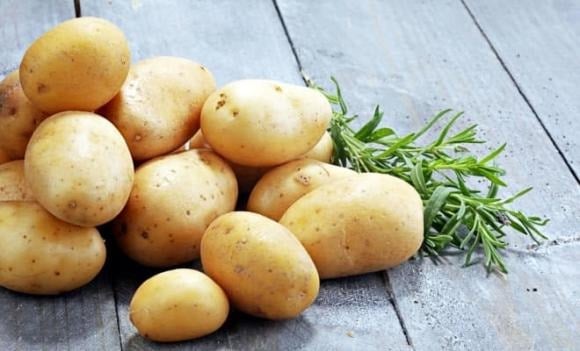1. Chocolate
Chocolate is a favorite treat for many, but storing it in the refrigerator is a common mistake. Low temperatures and high humidity cause the sugar in chocolate to melt and recrystallize as water evaporates, forming an unappetizing “blooming” effect on the surface. Additionally, condensation when removed from the fridge can lead to flavor loss and promote mold growth.
Proper storage: Keep it in a cool, dry place, ideally between 5–18°C.

2. Potatoes
Fridge storage is a counterproductive measure for potatoes, despite being a common practice to prevent sprouting. Low temperatures cause starch conversion to sugar. When fried or baked, these sugars can form acrylamide, a potentially harmful compound.
Proper storage: Store in a cool, dry, and dark place. This helps prevent sprouting while prolonging their shelf life.

3. Dried Nuts (Cashews, Almonds, Walnuts, etc.)
Contrary to popular belief, storing nuts in the fridge can lead to mold growth due to the cold and humid environment. Certain molds can produce aflatoxins, which are highly toxic. Additionally, the oils in the nuts can oxidize, resulting in rancidity and a loss of nutritional value.
Proper storage: Keep them in a cool, dry place, away from sunlight and moisture. Use airtight containers or ziplock bags for extended shelf life.
4. Tropical Fruits (Bananas, Mangoes, Pineapples, Papayas, etc.)
Tropical fruits are adapted to warm climates. Refrigeration damages their cells, causing them to turn black, soften, and spoil quickly. This is why bananas often turn black in the fridge.
Proper storage: Maintain room temperature and consume promptly to enjoy their freshness and nutritional benefits.
5. Strawberries
Even though they are not tropical, strawberries are also ill-suited for fridge storage unless intended for immediate consumption. Cold temperatures cause condensation on their surface, leading to rapid softening and spoilage within 1-2 days.
Proper storage: Keep strawberries dry and store them in a well-ventilated area, away from moisture, to prolong their freshness.
Many assume that refrigeration is the best way to preserve food, but it can often have the opposite effect, accelerating spoilage and impacting health. Understanding proper storage methods not only saves money but also ensures nutritional value and food safety for you and your family.
The Ultimate Superfood: Uncovering the Humble Root with an Astonishing Vitamin C Punch.
In Vietnam, there exists a wondrous root vegetable boasting an impressive nutritional profile. This humble tuber, unknown to many, contains a staggering amount of vitamin C, with levels up to ten times that of an apple. Not only is it exceptionally nutritious, but also remarkably affordable. Incorporate this vegetable into your diet to bolster your immune system and experience its delightful flavor, especially when slow-cooked with meat.



































